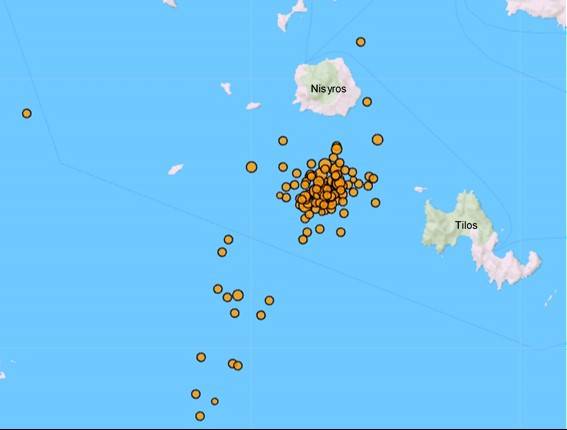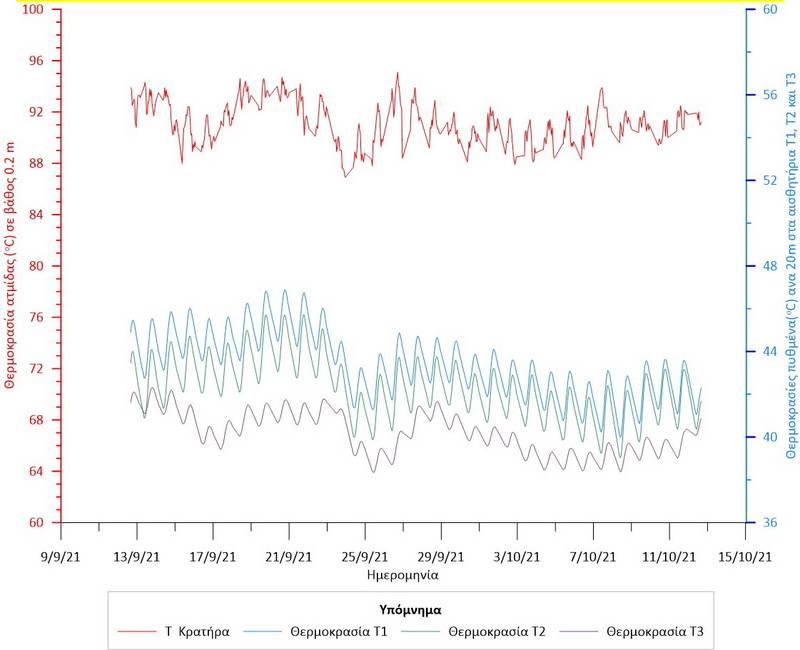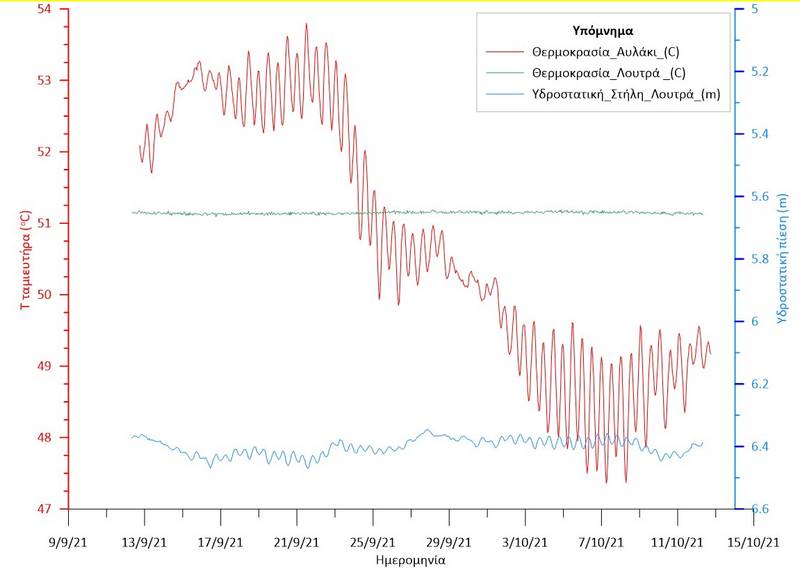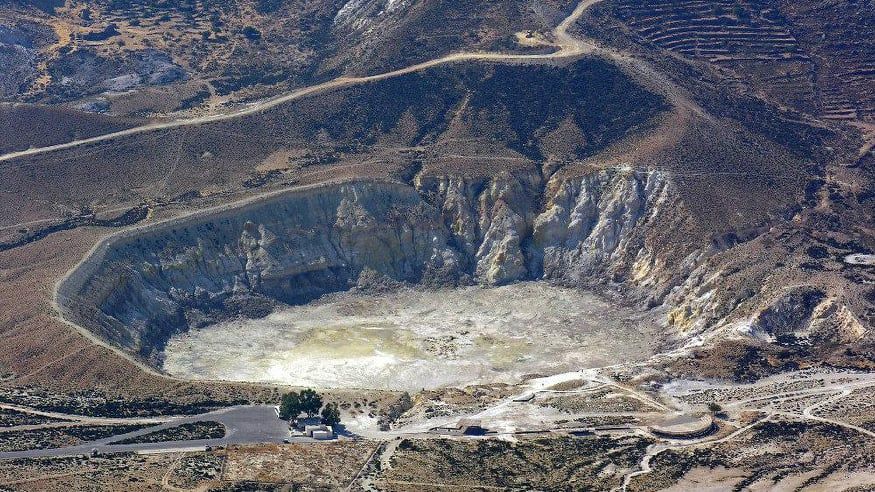Since March 2021, a seismic activation has been developing in the area between Nisyros and Tilos, manifested by numerous seismic events whose epicenters are aligned along a NE–SW direction, most likely controlled by a corresponding active fault zone.

Figure 1: The epicenters of the seismic events that occurred southwest of Nisyros from 14/9/21 to 14/10/21 (Source: Seismological Network of AUTH, http://geophysics.geo.auth.gr/ss/)
A similar activation in the same area has also been recorded in the past, causing particular concern among the inhabitants of Nisyros, both due to the relatively strong seismic events (a number of earthquakes with magnitudes between 4 and 4.5 Richter and one event of 5.7 Richter), and because of its long duration, exceeding six (6) months. Concerns have also been expressed regarding the relationship between this seismic activity and the Nisyros volcano, and whether it has affected its current state.

Figure 2: Variation diagram of steam vent temperatures (red line) and sediments of the floor of the hydrothermal crater Stefanos, from 12/09/2021 to 13/09/2021. (Source: EAGME Geothermal Monitoring Station Network)
The Hellenic Survey of Geology and Mineral Exploration (H.S.G.M.E.), in its On-site Inspection Report (T-3099) prepared in March 2021 (Dr. G. Vougioukalakis, Volcanologist & K. Kontodimos, Hydrogeologist), regarding the cracking and subsidence phenomena that occurred at that time in the Lakki area of the Nisyros caldera floor, concluded that: “From the indications, observations, recordings and measurements both in the immediate area of the fissure and in the wider region, throughout the period from 2000 to the present day, there is no evidence indicating any reactivation of the Nisyros volcano.”
During the same period, H.S.G.M.E. installed a network of three (3) real-time monitoring stations to record the temperature of the steam vents and the floor of the Stefanos hydrothermal crater (at three points), the temperature of the hot springs at Avlaki, and the temperature and water level of the borehole at Loutra Mandrakiou. The recordings from these monitoring stations (Figures 2 & 3) remain at levels consistent with the volcano’s normal resting state. Additionally, in July 2021, on-site periodic measurements of the physicochemical parameters of thermal fluids and soil gases were carried out, showing no deviation from the volcano’s state of calm.

Figure 3: Diagram showing variations in the temperature of the hot spring at Avlaki (red line), and the temperature (green line) and hydrostatic pressure (blue line) in the borehole at Loutra Mandrakiou, from 12/09/2021 to 13/10/2021 (Source: H.S.G.M.E. Geothermal Monitoring Station Network).
Furthermore, on October 9 and 10, 2021, Dr. Giovanni Chiodini of the Italian National Institute of Geophysics and Volcanology and Giulio Bini, PhD candidate at the Zurich Polytechnic, carried out measurements of carbon dioxide (CO₂) emissions from the area of the Stefanos hydrothermal crater on Nisyros.
According to the Preliminary Report prepared by the two scientists, CO₂ emissions from the Stefanos hydrothermal crater are significantly lower compared to previous measurements taken in 1999–2001 and 2018.

Figure 4: Representation of CO₂ emissions from the area of the Stefanos hydrothermal crater: a) October 2021, b) October 2018, c) the period 1999–2001 (Source: G. Bini & G. Chiodini, Preliminary Report 10/2021).
The results of all the above analyses and measurements lead to the conclusion that the seismic activation observed southwest of Nisyros over the past six (6) months has not affected the volcano, which remains in a state of calm.
Beyond and independently of the current state of the Nisyros volcano, H.S.G.M.E. is implementing a Volcanic Hazard Assessment Program across all active volcanoes in Greece (Methana, Milos, Santorini, Nisyros). Specifically for the volcanoes of Nisyros and Milos, priority has been given to assessing the risk of hydrothermal explosions, a study carried out in collaboration with the Italian Universities of Florence, Bari, and Bologna, as well as the Italian National Institute of Geophysics and Volcanology, with scientists G. Chiodini and G. Bini participating in the project’s research team.


